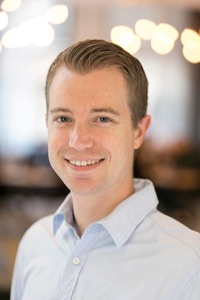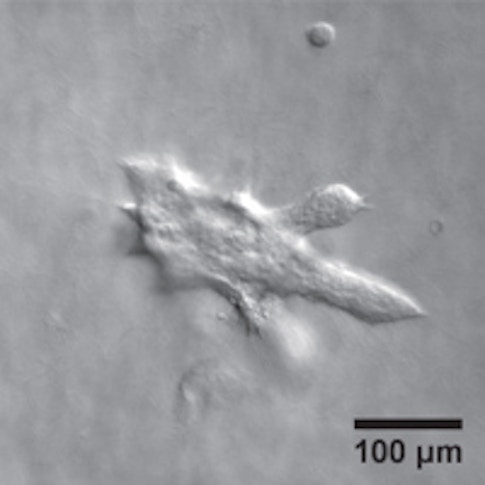MPS Awardee Spotlight: Andrew Mugler

Purdue University
Andrew Mugler, a 2015 Simons Investigator in Mathematical Modeling of Living Systems and an assistant professor of physics at Purdue University, conducts research on cell signaling and collective behavior from the molecular to the multicellular level.
Mugler is studying how cells communicate in order to sense better as a collective unit than they can alone. His group uses models to understand the physical properties of cell sensing and the limits to how precisely cells can sense chemicals or the gradients in those chemicals. Along with experimental and theoretical collaborators, Mugler has observed that tightly connected tissue cells pass molecules back and forth, allowing them to respond as a collective unit to a growth-factor gradient in their environment.
He is working to uncover the advantages or disadvantages of longer-range communication versus close-range, tight-junction communication. “You would think that for two cells to sense collectively, it would be best if they were very close together, but we are finding that in some cases it is better to be far apart, so their individual measures of the environment are sufficiently different from each other,” Mugler says. “But they cannot be infinitely far apart because then they cannot effectively communicate.” This principle applies not only to two cells, but to multicellular communities as well, allowing researchers to make predictions about what arrangements of cells in a community are best for collective sensing.

Working in collaboration with Bumsoo Han, a mechanical engineer at Purdue, Mugler is studying how cancer cells use sensory information to migrate to other sites in the body. During metastasis, breast cancer cells “do not always break off from the tumor individually; they do so in complicated geometries, like streams, where they migrate through the surrounding tissue into the blood vessels as collective units,” Mugler said. “In fact, if you look in tumor patients at circulating tumor cells, you’ll find not just single cells in the bloodstream, but clusters of cells. It has been shown that these clusters did not form in the bloodstream; instead they formed in the main tumor. So they have gone from the tumor to the body as a complete, collective unit. We want to understand whether it benefits their metastatic potential to stay as a collective unit.”
Mugler’s vision for the next few years is to understand how cell-to-cell communication influences not just the cells’ sensory abilities or their migration abilities, but the way they respond to their environment, detecting the presence of chemicals and of each other. “How can we build a comprehensive theory that describes the information processing of not just a single cell, but also of cell groups?”
- Mugler, A.; Levchenko, A.; Nemenman, I. (January 20, 2016). “Limits to the precision of gradient sensing with spatial communication and temporal integration”. Proc. Natl. Acad. Sci. USA, 10.1073/pnas.1509597112.
- Ellison, D.; Mugler, A.; Brennan, M. D.; Lee, S. H.; Huebner, R. J.; Shamir, E. R.; Woo, L. A.; Kim, J.; Amar, P.; Nemenman, I.; Ewald, A. J.; Levchenko, A. (January 20, 2016). “Cell-cell communication enhances the capacity of cell ensembles to sense shallow gradients during morphogenesis”.
Proc. Natl. Acad. Sci. USA, 10.1073/pnas.1516503113.


